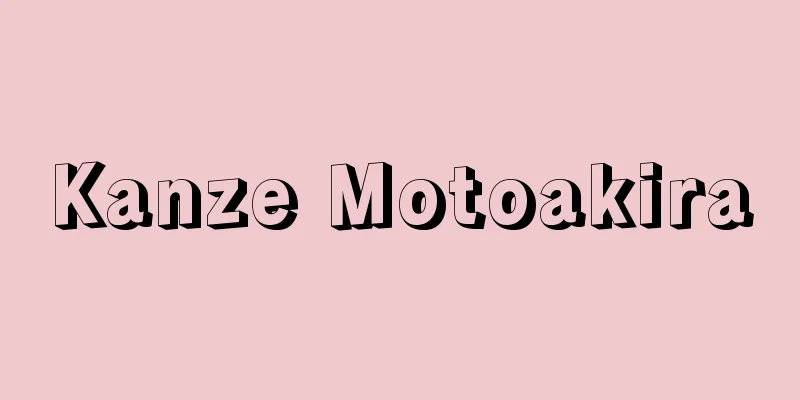Iron oxide - Kane

|
This refers to tooth blackening. Burnt scrap iron is placed in strong tea, to which powdered gallnut is added, and the resulting liquid is used to dye the teeth. Sake, candy, or porridge may also be added to this to ease discomfort and make it easier to use, as it is something that is put in the mouth. Women in ordinary households would keep a small jar filled with strong tea in the corner of the hearth, and put scrap iron such as old nails from the bonfire in it to make it black. Powdered gallnut is added to this, and the ingredients mentioned above are added, heated, and then applied to the teeth. As tools, bundles of bird feathers or the tips of thin willow branches crushed into small pieces and the fibers used to make a brush are used. Samurai families sometimes used an instrument called a mimidarai. It is not clear when this custom of applying iron paste began, but it is written in "The Tale of Genji" and "The Pillow Book" that it was practiced among aristocrats in the Heian period, and war chronicles also tell of men applying iron paste during the Genpei period. By the Edo period, it had become a custom among ordinary women, but it seems that the custom had already fallen out of use among men. Some women would tie their hair and apply iron paste every morning as part of their grooming. Originally, the application of iron paste was a sign of adulthood, and was meant to be a social display of a woman's marriage potential. In many cases, it was applied on the occasion of her first menstruation, as can be seen in the expressions "jusan-gane" (13th gold) and "jusan-iwai" (13th celebration). As time went on, the practice tended to get later and later, and there are expressions such as "jusanchi-gane" (17th gold), "juhachi-gane" (18th gold). When the first application was made, a temporary parent called a "kaneoya" was chosen to provide guidance. The requested parent would then give the daughter tools for applying the iron paste, and the daughter would be called an "iron paste girl" or "brush girl", and this temporary parent-child relationship would continue for life. In particular, at the time of marriage, the "kaneoya" played an important role as a facilitator for the bride. In later generations, even after the custom of applying iron paste disappeared, the custom of asking for a temporary parent called an "iron paste parent" in addition to a "matchmaker" (nakoudo) still remains in many areas. In the beginning of the practice of dyeing teeth, there was a custom of collecting and using iron dye from seven houses, which was called "Nanatokogane". As mentioned above, the age for dyeing teeth became later, but it was later extended to when the marriage was decided, the day after the wedding, or after pregnancy. A saying also emerged that "you should not show your white teeth to a baby", and there are also cases where teeth are dyed when a child is born. Even unmarried women would dye their teeth; in Fukui Prefecture, women would dye their teeth at the age of 30, and this is called "hiroigane". This was prohibited by law after the Meiji period, but the custom remained strong among the people, and even in the Taisho period, old women with blackened teeth could occasionally be seen. [Hisako Maruyama] Source: Shogakukan Encyclopedia Nipponica About Encyclopedia Nipponica Information | Legend |
|
お歯黒(はぐろ)のこと。鉄屑(てつくず)を焼いたものを濃い茶の中に入れ、これに五倍子(ふし)の粉を加えてその液で歯を染める。この中に酒、飴(あめ)、粥(かゆ)を加えることもあるのは、口中に入れるものゆえ、不快さを和らげて使いやすくするためであった。ごく普通の家の女は、いろりの隅に小さな壺(つぼ)を用意して濃い茶を入れておき、その中にたき火の中の古釘(ふるくぎ)などの鉄屑を入れて金けを出しておいた。これに五倍子の粉を加え、前に述べたようなものを加えて温めて歯につけた。道具としては、鳥の羽を束ねたものや、楊(やなぎ)の木の細い枝の先を細かく砕いて繊維を刷毛(はけ)のようにしたものを使った。武家などでは耳盥(みみだらい)とよぶ器具を使うこともある。 この鉄漿付けの風習がいつの時代に始まったかはつまびらかでないが、平安時代の貴族の間で行われていたことは『源氏物語』や『枕草子(まくらのそうし)』にもみえるし、源平時代には男子も鉄漿をつけていた者のあったことは戦記物のなかにもみえる。江戸時代に至って一般庶民の婦人のなかに行われるようになったが、男子のほうはすでに廃れていたらしい。毎朝の身だしなみとして髪を結い、鉄漿をつける女もあった。 鉄漿付けは元来成女のしるしで、いわば結婚可能の女であるということを社会的に披露する意味があって、「十三がね」とか「十三祝い」ということばがあるように、多くの場合、初経(初潮)を機につけたものである。時代を下るにしたがって、しだいに遅くなる傾向があり、「十七がね、十八がね」のことばもある。初めてつけるときには、鉄漿親(かねおや)という仮親を決めて指導を頼んだ。頼まれた親のほうでは鉄漿付け用具を贈り、娘は鉄漿娘とか筆子(ふでこ)などとよばれ、この仮の親子関係は生涯続いた。とくに結婚に際しては、嫁のほうの世話役として重要な位置を占めた。後代、鉄漿付けの風習がなくなっても、仲人(なこうど)のほかに鉄漿親と称する仮親を頼む風習が現在も残っている地域も多い。鉄漿付けの初めには、ナナトコガネと称して7軒の家から鉄漿をもらい集めて用いるという風習もあった。鉄漿付けの年齢は前述のように遅れてきたが、さらに結婚の決まったときとか、結婚した翌日とか、あるいは妊娠してからというように延引してきたが、「赤子に白歯を見せるものではない」などという言い習わしもできて、子供の生まれるときに歯染めをする例もある。結婚しない婦人でも鉄漿をつけることがあって、福井県では30歳になってつけたが、これをヒロイガネとよんでいる。明治以後法令でこれを禁じたが、民間の慣習は根強く残って、大正時代に入ってもまれにはお歯黒をした老女をみることがあった。 [丸山久子] 出典 小学館 日本大百科全書(ニッポニカ)日本大百科全書(ニッポニカ)について 情報 | 凡例 |
>>: Qānūngo (English spelling)
Recommend
Chrysanthemum intestine - Kikuwata
〘Noun〙 The intestines or milt of a cod . It is nam...
Japanese Literary Patriotic Association
A national policy literary group formed during Wor...
canal rays
…German physicist Julius Plücker (1801-68) named ...
Vesali (English spelling)
…It was one of the six great cities of ancient In...
Narrow pelvis
This refers to a condition in which the bony birt...
Banminho (English spelling) ius gentium
Roman law was also applied to non-Roman citizens. ...
Darley Arabian
...The Arabian and Barb oriental horses imported ...
Ohanawarabi - Ohanawarabi
... Himehanawarabera is sometimes called Hebinosh...
World Council of Churches (WCC)
The world church movement (→ ecumenism) is a major...
Voltaic
...A branch of the Niger-Kordofan language family...
Jyobo system
In ancient times, during the Ritsuryo period, the...
cottage cheese
Also called cottage cheese, this type of cheese is...
Barbaroi (Greek: barbaroi)
A term used by the ancient Greeks (Hellenes) to r...
Kyoka Daitai - Kyoka Daitai
…On the other hand, during the An'ei period (...
Northwest Orient Airlines
…The airline's code is NW. It is also called ...









